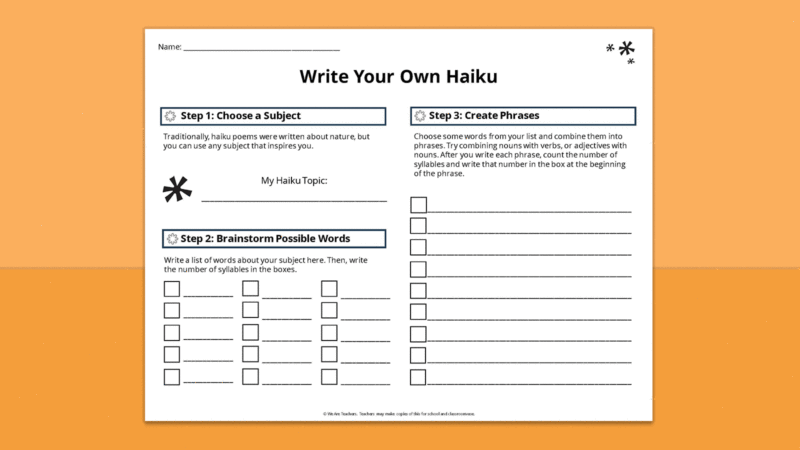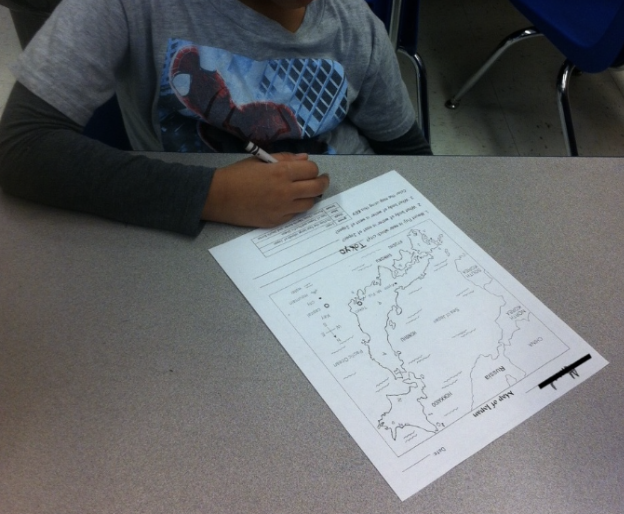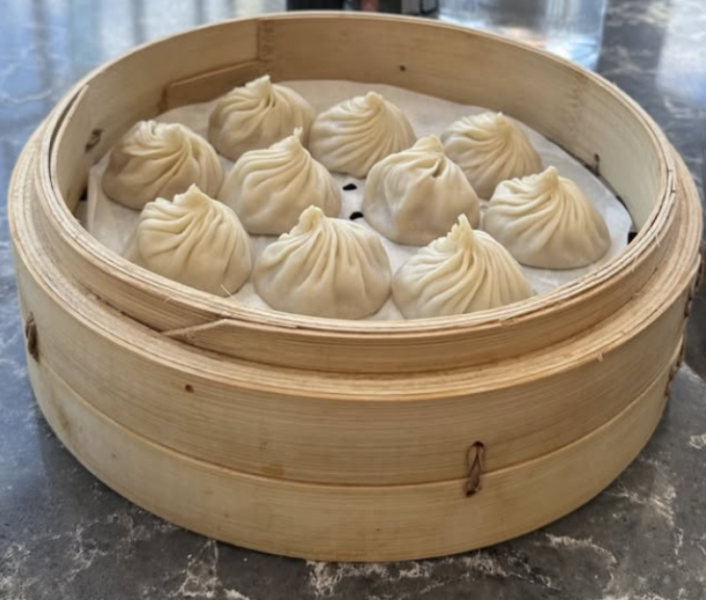May marks Asian American Pacific Islander (AAPI) Heritage Month, an important time for more than 24 million people in the United States who identify as Asian Americans or Pacific Islanders. The month of May was chosen to commemorate the completion of the Transcontinental Railroad, which relied on a large number of Chinese laborers, in 1869.
AAPI Heritage Month is a perfect opportunity to introduce students to activities that teach them about the many contributions of Asian, Asian American, and Pacific Islanders to the history, culture, and communities across the United States. It’s also a good time to discuss the historical and current prejudices, biases, and discriminatory practices that have affected individuals of Asian and Pacific Islander descent and how we can work as a community to dismantle these barriers.
Below is a list of AAPI Heritage Month activities you can use in your classroom. Please remember that the AAPI community is very diverse and not all individuals from that community or heritage may celebrate the same way or have the same history or identity. As you browse these activities, think about the students and staff in your school community and how their heritage identities may contribute to the richness of these activities and conversations.
FREE PRINTABLE
AAPI Heritage Month Activities
Grab our free printable bundle featuring three of the AAPI Heritage Month activities described below. It includes an AAPI biography flip-book template, a heritage matching game, and a reading passage with comprehension questions.
AAPI Heritage Month Activities
1. Fold origami

The art of origami originated in ancient Japan and literally means to fold (ori) paper (kami). Many of the different objects and shapes traditionally made in origami provide a window into cultural symbolism and values passed down through generations of Japanese people. Get more information on origami here.
2. Create an AAPI biography flip-book

Firsthand accounts told by those who identify as Asian and/or Pacific Islander are incredibly powerful in helping us understand the Asian American/Pacific Islander experience. Diverse literary accounts also provide windows and mirrors for students who share these identities with the author to help reflect on and understand their own developing identities. This flip-book activity will help guide readers as they explore the stories of those in the AAPI community. Just fill out the form on this page to grab this free printable activity.
3. Write haiku

The art of haiku also originates from Japanese tradition, dating back to the 17th century. Haiku is a form of unrhymed poetry made of three lines, with five syllables, seven syllables, and five syllables.
Reading haiku poetry helps students understand the evolution of history and culture in Japan expressed through art.
4. Read literature by AAPI authors

Reading literature created by a diverse group of AAPI authors can help us understand both the differences in culture that make us unique and the commonalities that we all share.
5. Play an AAPI heritage matching game

The AAPI community is diverse in backgrounds, countries, languages, cultural practices, and history. To help students understand which practices relate to which heritage backgrounds, you can have students play the AAPI Heritage Matching Game. Just fill out the form on this page to grab this free printable activity.
6. Learn a hula dance

Hula has been a centerpiece of Hawaiian culture dating back to ancient times. Hula uses dance and movement to tell stories and folktales passed down through generations. These dances and stories help us learn about the history and land of the Hawaiian people. One popular dance is the hukilau, which celebrates the popular activity of fishing as a community.
7. Learn a new language from an AAPI country

There are dozens of different languages and dialects spoken by individuals in the AAPI community. Some of these languages use letters of the alphabet while others use characters to represent syllables or whole words. Learning a new language can help students connect to others in that community who may not speak English or their own home language, bridging gaps between communities.
8. Take a virtual tour of AAPI destinations
While it would be amazing to take a real field trip to another country, that isn’t always feasible. Instead, you and your students can take a virtual tour to explore a variety of historical sites and communities important to the AAPI community. Some places you might explore include Angkor Wat, Vietnam heritage sites, the Great Wall of China, and the Hawaiian volcanoes.
9. Create a pen pal program with a school in an AAPI country
Connecting to children in other countries can be incredibly impactful for students. Students can have the opportunity to explore the similarities and differences they share with same-aged peers in different countries. They can also gain a better understanding of cultural practices common in AAPI tradition through children their own age. A pen pal program may even lead to virtual video meet-ups or homestay visits with one another.
10. Read a passage about AAPI history and answer comprehension questions

Historical understanding of the origins of AAPI Heritage Month can provide a great foundation for students as they engage in other AAPI Heritage Month activities throughout May. This reading passage can also be used as a catalyst for additional historical research into events or traditions important to the past, present, and future. Just fill out the form on this page to grab this free printable activity.
11. Create a map of AAPI countries and chart where students and staff have visited or are from

Maps help us understand where in the world different cultures and practices originate from. Creating a classroom map of AAPI countries can help students understand how large and diverse the AAPI population is. In addition, you can explore the home countries of your students and staff or learn where they have traveled, so that students can share firsthand experiences with one another.
The best way to learn about AAPI heritage is through firsthand experiences of the people in our communities. Consider reaching out to individuals who have expressed an interest in sharing their cultural background—this might be a teacher, student, parent, or local leader. You can invite them to speak to the class, or have students talk with them personally and write about what they learn. Encourage students to reflect on the diversity and uniqueness of each story, and avoid generalizations—there is no single AAPI experience. This activity can help foster empathy, deeper understanding, and appreciation for the richness of AAPI cultures.
13. Learn about the art of henna

Henna is a visual art form practiced in India, Pakistan, Africa, and the Middle East. Dried leaves of a henna tree are used to create the red dye that is used to paint a variety of designs onto skin or fabrics. Henna is used to celebrate a variety of events, including weddings, as the henna paste is believed to symbolize good health and prosperity in marriage.
14. Explore the history of one of the Asian or Pacific Island countries

There are 48 countries in Asia and 18 countries and territories in the Pacific Islands. Thus, the history of communities where AAPI individuals descend from can vary greatly. Understanding the history of different countries can help us understand the diverse ways we can honor and celebrate the AAPI community during AAPI Heritage Month and year-round.
15. Learn to make a traditional dish

Food is a staple of most cultures and celebrations. This is especially true in Asian and Pacific Islander communities. Sharing food with one another symbolizes care, generosity, and prosperity. Specific foods often also hold symbolism for those in the AAPI community. For example, the dumplings pictured above symbolize wealth and prosperity in the Chinese culture.
16. Visit an AAPI museum or festival

A great AAPI Heritage Month activity involves visiting museums or festivals that celebrate AAPI traditions. These places and events provide us with historical and cultural information about a community. They often also provide immersive experiences for participants so that you and your students can participate in a cultural practice or event that is significant to that AAPI community.
17. Watch a television show or film about the AAPI experience.
Throughout history, film and television have been popular mediums for storytelling. Both documentaries and fictional films and shows can teach us about beliefs, traditions, and cultures of the filmmakers and their communities. Some popular AAPI films include Mulan, Ponyo, Moana, Spirited Away, and many more.
18. Listen to music by AAPI artists
Music is a powerful tool for sharing stories, passing down traditions, and highlighting instruments integral to different communities. This compilation created by the Chicago Youth Symphony Orchestra is a great place to start to get to know different AAPI artists and genres of music.
19. Discuss racism and Asian hate with students
Racism against individuals of Asian and Pacific Island descent has been prevalent throughout history. However, there was a sharp increase in Asian hate and racism prompted by the COVID-19 pandemic. Recent research highlights the need to amplify the voices of the AAPI community, their experiences with racism, and what can be done to protect these communities.
20. Learn the traditional Indian dance form kathak
Kathak is one of nine major classical Indian dance styles, originating from northern India. It is known for its rhythm, footwork, and storytelling. Learning the history and stories told through kathak dance can help students learn about the cultural practices and people in northern India and how this dance style has evolved over time with its infusion into Western tradition.
Get my free printable bundle of AAPI Heritage Month activities!

Ready to start teaching your students about AAPI Heritage Month? Grab our free printable AAPI Heritage Month activity bundle.


